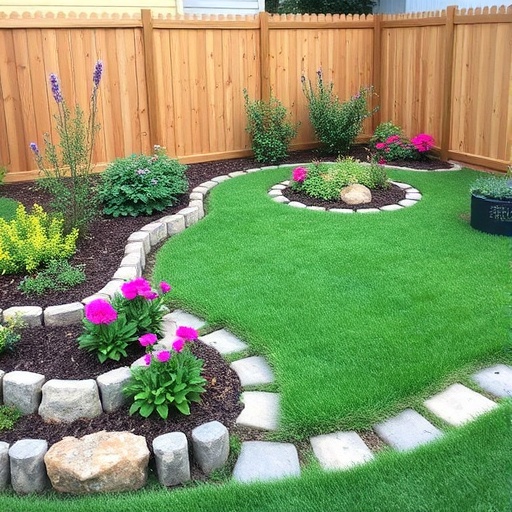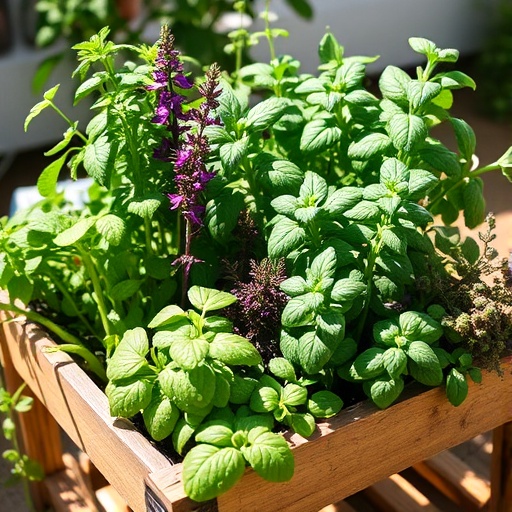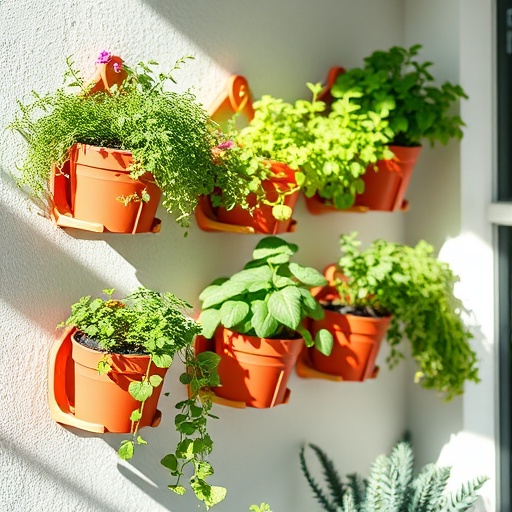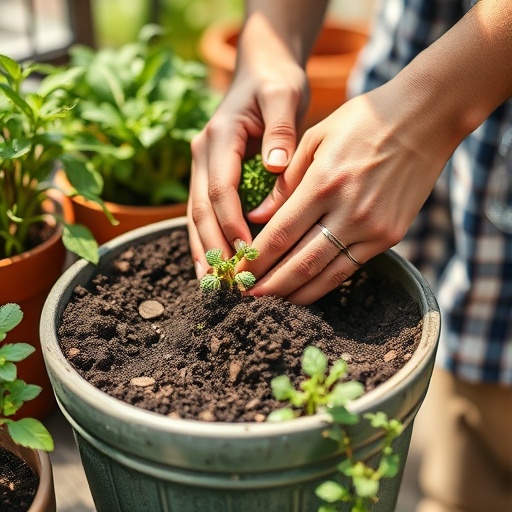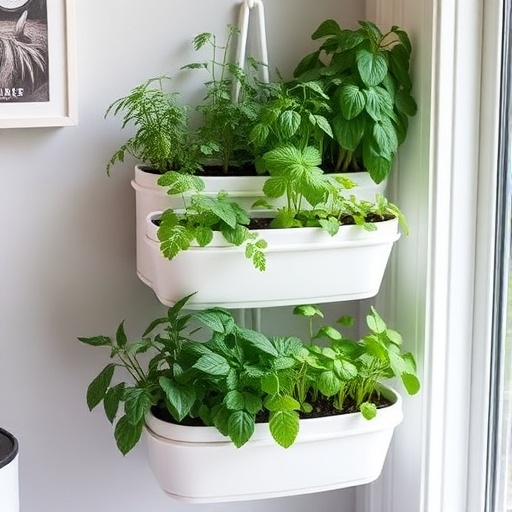Introduction
Ever gazed at a barren patch of yard, sighing at its untapped potential, and wondered: How can I infuse vibrant life and aesthetic charm into this small space without breaking the bank or my back? It’s a common dilemma for countless homeowners and renters alike. Creating captivating outdoor retreats doesn’t require sprawling acreage or an unlimited budget; in fact, some of the most stunning transformations come from clever, thoughtful designs tailored for compactness. If you’re pondering how to transform a modest corner into a blooming spectacle, you’re not alone. This guide is dedicated to bringing your vision to life, exploring ingenious flower bed ideas perfectly suited for small yards. We’ll delve into designs that maximize impact in minimal footprints, turning even the most overlooked areas into delightful floral havens.
Tools & Materials Needed
Embarking on your journey to create enchanting flower bed ideas for small yards requires a foundational set of tools and materials. Choosing the right ones not only simplifies the process but also supports sustainable gardening practices.
Basic Tools:
- Hand Trowel: Essential for digging small holes, transplanting, and working with soil. Look for one with an ergonomic handle.
- Garden Fork or Spade: For turning over larger sections of soil, breaking up compacted earth, and adding amendments.
- Gardening Gloves: Protect your hands from thorns, soil, and potential irritants.
- Watering Can or Hose with a Gentle Sprayer: Crucial for efficient and even watering, especially for delicate seedlings.
- Pruning Shears: For deadheading spent blooms and light trimming to encourage bushier growth.
Eco-Friendly & Budget-Friendly Alternatives:
- DIY Raised Beds: Instead of buying expensive kits, repurpose old pallets, untreated lumber scraps, or even tires (if properly prepared) to create raised flower bed ideas. This can save up to 40% on material costs compared to store-bought options.
- Compost: Instead of synthetic fertilizers, enrich your soil with homemade compost. It’s free, improves soil structure, and introduces beneficial microorganisms. You can start a small compost bin using kitchen scraps and yard waste.
- Seed Swaps: Connect with local gardening groups or online communities to swap seeds. This is an excellent way to acquire new varieties without cost and foster community.
- Repurposed Containers: For very small spaces or balcony gardening, old buckets, plastic containers, or even sturdy grocery bags (with drainage holes) can serve as excellent planters, offering creative flower bed ideas on a dime. Learn how to create a DIY balcony herb garden with recycled containers for inspiration.
Planting Materials:
- High-Quality Potting Mix or Topsoil Blend: Look for a mix specifically designed for flowering plants, often containing peat moss, perlite, and compost. A good base is crucial for successful flower bed ideas.
- Seeds or Young Plants: Depending on your budget and patience. Seeds are typically more economical but require a longer growing period. Young plants offer instant impact.
- Mulch: Organic options like wood chips, straw, or shredded leaves help retain soil moisture, suppress weeds, and regulate soil temperature.
Time & Effort Overview
Crafting beautiful flower beds, especially those designed for small spaces, is a rewarding endeavor that varies in commitment. For most of the flower bed ideas we’ll discuss, you can anticipate a moderate investment of your time and effort.
- Initial Setup (Per New Flower Bed): Expect to dedicate 4-8 hours. This includes planning, soil preparation, and initial planting. For a simple border, it might be quicker, while a complex design with multiple plant layers could take longer.
- Growth Period: This is largely passive, but requires consistent attention. Most annuals will show significant growth within 3-6 weeks and begin blooming shortly after. Perennials may take a full season or two to establish and reach their full potential. For example, zinnias can go from seed to bloom in about 60-75 days, while some slower-growing perennials might take 90-120 days or more.
- Ongoing Maintenance (Weekly): Budget roughly 1-2 hours per week for watering, deadheading, and weeding. This is a general estimate and can fluctuate based on weather conditions and plant needs. More drought-tolerant plants will require less frequent watering, potentially cutting down maintenance by 30%.
- Seasonal Chores (Quarterly): About 2-4 hours for tasks like adding compost, pruning, or preparing the bed for winter.
Difficulty Level:
- Beginner-Friendly: The concepts presented here are designed to be accessible to novice gardeners. We’ll focus on resilient plants and straightforward techniques. Don’t worry if you’re new to gardening; even simple flower bed ideas can yield stunning results.
- Intermediate Potential: For those who wish to experiment with more complex plant combinations, companion planting, or specific aesthetic themes, there’s ample room to elevate the difficulty and creativity.
Generally, establishing your first flower bed tends to be the most labor-intensive part. Once established, maintenance becomes a pleasant routine rather than a chore.
Step-by-Step Gardening Process
Creating your dream flower bed is an exciting journey. Let’s break it down into manageable steps to ensure your small yard flourishes with vibrant flower bed ideas.
1. Plan Your Flower Bed Layout
Start with a vision. Consider the size and shape of your small yard or chosen area. Draw a simple sketch. Think about the sun exposure throughout the day. Does the area get full sun (6+ hours), partial sun (3-6 hours), or shade? This dictates your plant choices. Group plants with similar light and water requirements. Choose a color scheme that complements your home. Don’t worry if your initial sketch isn’t perfect; it’s a guide!
2. Prepare the Soil
Healthy soil is the foundation of any thriving flower bed. Begin by thoroughly clearing the area of any weeds, rocks, or debris. Dig down about 6-8 inches. If your soil is heavy clay, amend it with organic matter like compost or well-rotted manure to improve drainage and aeration. For sandy soil, organic matter also helps retain moisture and nutrients. Aim for a rich, friable soil texture. A good soil mix can boost plant growth by up to 30%.
3. Select Your Plants
This is where your flower bed ideas truly come to life! For small yards, focus on plants with a compact growth habit, or those that can be easily managed. Consider a mix of annuals for continuous color (e.g., petunias, impatiens, marigolds) and perennials for long-term structure and return bloom (e.g., hostas for shade, coneflowers for sun). Think about varying heights and textures. Place taller plants at the back, medium ones in the middle, and shorter, trailing plants at the front.
4. Plant with Care
Before planting, gently remove plants from their nursery pots. Tease apart any matted roots at the bottom of the root ball. Dig a hole twice as wide as the root ball and just as deep. Place the plant in the hole, ensuring the top of the root ball is level with the surrounding soil. Backfill with soil, gently firming it around the base of the plant to remove air pockets. Give each newly planted flower a good drink of water immediately.
5. Water Thoroughly
After planting, consistent watering is key. This helps roots establish themselves. Water deeply, encouraging roots to grow downwards. Avoid shallow, frequent watering, which leads to weak, surface-level roots. The general rule is about 1 inch of water per week, either from rain or irrigation. Stick your finger into the soil; if it feels dry an inch or two down, it’s time to water again. Learn more about how to water balcony herbs without overwatering, principles which apply to flower beds too.
6. Mulch for Success
Once planted and watered, apply a 2-3 inch layer of organic mulch around your plants, keeping it a few inches away from stems. Mulch conserves soil moisture, suppresses weed growth by up to 70%, and helps regulate soil temperature. Good choices include shredded bark, straw, or compost. Here’s how to fix common issues like forgetting to mulch early!
Growth & Care Tips
Once your small yard flower bed is planted, the real magic begins with proper growth and care. These tips will help your flower bed ideas flourish beyond expectation.
- Watering Frequency: The golden rule is deep and infrequent watering after establishment. Most flowering plants prefer the soil to dry slightly between waterings to prevent root rot. On average, check your soil every 2-3 days, especially during hot, dry spells. Young plants and annuals typically need more frequent watering than established perennials. Data shows that 60% of all plant deaths among beginners are due to improper watering.
- Sunlight Exposure: Ensure your plants receive their required amount of sunlight. Plants categorized as “full sun” need at least 6 hours of direct sunlight daily. “Partial sun/shade” plants thrive with 3-6 hours, often preferring morning sun and afternoon shade. “Full shade” plants do best with less than 3 hours of direct sun. Observing your bed’s light patterns is critical; what appears sunny in the morning might be shaded by midday.
- Pruning & Deadheading: Regularly remove spent blooms (deadheading) from annuals and many perennials. This redirects the plant’s energy from seed production to producing more flowers, extending your blooming season significantly, sometimes by several weeks. For example, deadheading petunias can increase flower production by 20-30%. Prune any yellowing or diseased foliage to maintain plant health and air circulation.
- Fertilization: While good soil preparation is vital, occasional feeding can boost plant vigor. Use a balanced, slow-release granular fertilizer in spring, or a liquid feed every 2-4 weeks during the growing season. Organic options like fish emulsion or compost tea also provide essential nutrients. Avoid over-fertilizing, which can burn roots and lead to excessive leafy growth at the expense of blooms.
- Pest Prevention: Vigilance is your best defense. Regularly inspect your plants for signs of pests (e.g., aphids, spider mites, slugs). Early detection makes control easier. Employ eco-friendly methods first:
- Manual Removal: Hand-pick larger pests like slugs.
- Strong Water Spray: Dislodge aphids from plant leaves.
- Neem Oil: An organic pesticide that disrupts pest life cycles.
- Companion Planting: Marigolds, for instance, are known to deter nematodes and other pests when planted near susceptible plants. Selecting plants with natural pest resistance further enhances your flower bed ideas.
Eco-Friendly & Sustainable Alternatives
Cultivating beautiful flower bed ideas for small yards doesn’t have to burden the environment. Embrace these eco-friendly and sustainable practices to make your gardening effort greener.
- Composting: Turn kitchen scraps (fruit/veg peels, coffee grounds) and yard waste (leaves, grass clippings) into nutrient-rich compost. This “black gold” improves soil structure, reduces waste going to landfills, and eliminates the need for chemical fertilizers. A small compost tumbler or worm bin is perfect for small spaces.
- Natural Fertilizers: Beyond compost, consider other organic options like bone meal for phosphorus, blood meal for nitrogen, or kelp meal for trace minerals. Epsom salts, when used sparingly, can also boost magnesium for healthier foliage. These natural alternatives feed the soil food web, leading to more resilient plants.
- Water Conservation:
- Drip Irrigation or Soaker Hoses: These deliver water directly to the plant roots, minimizing evaporation and runoff. They can reduce water usage by up to 50% compared to overhead sprinklers.
- Rain Barrels: Collect rainwater from your downspouts. Rainwater is free of chlorine and other chemicals found in tap water, making it excellent for plants and reducing your water bill.
- Mulch: As discussed, a 2-3 inch layer of organic mulch significantly reduces water evaporation from the soil.
- Drought-Tolerant Plants: Select plants native to your region or those known for their low water requirements. Succulents, sedums, lavender, and many ornamental grasses are excellent choices for sustainable flower bed ideas.
- Alternatives for Small Spaces:
- Vertical Gardens: Maximize your growing area by going vertical. Pallet gardens, wall-mounted planters, or tiered planting systems can hold numerous plants in a tiny footprint. This is an excellent solution for urban gardeners with limited ground space.
- Container Gardening: Pots, window boxes, and hanging baskets offer incredible flexibility. You can move them to optimize sun exposure or create dynamic arrangements. Choose appropriately sized pots for your plants to ensure adequate root development. Explore compact balcony herb garden layout plans for inspiration.
- Balcony Gardens: Even without a yard, a balcony can become a lush oasis. Utilize railing planters, hanging baskets, and stackable containers to create vibrant flower bed ideas in the sky.
Creative Ideas & Uses
Transforming small yards into captivating havens involves more than just planting flowers; it’s about thoughtful design, repurposing, and combining elements to create a harmonious aesthetic. Here’s how to inject creativity into your flower bed ideas.
Decorate with Plants for Impact:
- Color Blocking: For a modern and bold look, plant large swaths of a single color within a section of your flower bed. This creates strong visual impact in a small space.
- Layering Heights: Create drama and depth by layering plants of different heights. Use groundcovers or low-growing annuals at the front, medium-sized perennials in the middle, and a few taller statement plants at the back or center.
- Focal Points: Introduce a single, striking plant (like a dwarf ornamental tree or a vibrant perennial) as a focal point to draw the eye. Surround it with complementary foliage and blooms.
- Edible Flowers: Incorporate edible flowers like nasturtiums, calendula, or pansies. They add beauty and can be used in culinary delights.
Repurpose Garden Materials:
- Old Furniture: An old wooden chair can become a unique planter by replacing the seat with a pot of flowers. A vintage dresser drawer can be converted into a raised mini-bed.
- Found Objects: Old tires (painted brightly), discarded boots, or even colanders can be transformed into quirky, charming planters, adding personality to your flower bed ideas.
- Broken Pottery: Don’t throw away broken terra cotta pots. Use the shards to create decorative edges in your flower bed or to mark plant varieties.
Combine Plants Aesthetically:
- Companion Planting for Beauty and Benefit: Pair plants that look good together and benefit each other. For example, planting lavender near roses can deter aphids and adds a lovely fragrance.
- Texture Contrast: Combine plants with different leaf shapes and textures. The delicate fronds of ferns next to the bold leaves of hostas create visual interest without needing many colors.
- Succession Planting: Plan for continuous blooms. Choose a variety of plants that flower at different times throughout the growing season. Early spring bulbs followed by summer annuals and fall-blooming perennials ensure your small yard is always vibrant.
- Vertical Accents: Integrate trellises or small obelisks for climbing plants like clematis or morning glories. This adds height and makes your small garden feel larger. For those with patios or balconies, check out vertical balcony herb garden design ideas for scalable vertical gardening solutions.
Common Mistakes to Avoid
Even seasoned gardeners make mistakes, but understanding common pitfalls can help you avoid them and achieve flourishing flower bed ideas in your small yard.
- Overwatering/Underwatering: This is by far the most frequent error. Overwatering drowns roots, leading to root rot (responsible for 60% of houseplant deaths), while underwatering stresses plants and hinders growth. Prevention: Always check soil moisture before watering. Stick your finger 1-2 inches into the soil; if it’s dry, water deeply. Use containers with drainage holes to prevent waterlogging.
- Ignoring Sunlight Requirements: Placing shade-loving plants in full sun or vice-versa is a recipe for disaster. Plants will either scorch, become leggy, or fail to bloom. Prevention: Observe your garden’s sun patterns throughout the day before purchasing plants. Read plant tags carefully for their specific light needs.
- Poor Soil Preparation: Planting in compacted, nutrient-poor soil severely limits plant growth. Prevention: Always amend your soil with generous amounts of organic matter, such as compost, before planting. This improves drainage, aeration, and nutrient retention. A well-prepared bed can boost plant success rates by up to 40%.
- Overcrowding Plants: While it’s tempting to fill every inch, plants need space to grow, breathe, and receive adequate light. Overcrowding leads to poor air circulation, increased disease susceptibility, and stunted growth as plants compete for resources. Prevention: Pay attention to the mature size of your plants. Space them according to package directions, typically allowing for their full grown width. It might look sparse initially, but they’ll fill in beautifully.
- Neglecting Deadheading: Allowing spent flowers to remain on the plant diverts energy into seed production instead of new blooms. Prevention: Regularly deadhead annuals and many perennials (like petunias and coneflowers) to encourage continuous flowering throughout the season. This simple act can extend flowering by weeks.
- Lack of Mulch: Skipping mulch means more weeding, less moisture retention, and exposed soil vulnerable to temperature fluctuations. Prevention: Apply a 2-3 inch layer of organic mulch after planting. It saves you time and benefits your plants.
- Choosing the Wrong Plants for the Climate: Selecting plants not suited to your local hardiness zone will result in short-lived beauty or failure. Prevention: Know your USDA hardiness zone and select plants that thrive in it. Consult local nurseries or extension offices for native or well-adapted plant recommendations.
Maintenance & Storage Tips
Ensuring the longevity and vibrancy of your small yard flower beds goes beyond initial planting. These maintenance and storage tips will keep your garden thriving season after season.
Long-Term Plant Health:
- Seasonal Pruning: Beyond deadheading, many perennials benefit from a more substantial prune. Spring-blooming shrubs might be pruned after flowering, while some perennials (like salvias) can be cut back in late fall or early spring to encourage bushy growth. This helps maintain shape and vigor.
- Soil Testing: Every 2-3 years, conduct a soil test. This will tell you exactly what nutrients your soil is lacking or has in abundance, allowing for targeted amendments rather than guesswork. Most local extension offices offer affordable soil testing services.
- Dividing Perennials: Many perennials (like hostas, daylilies, and irises) become overcrowded after a few years, leading to reduced flowering. Dividing them every 3-5 years rejuvenates the plant and provides free new plants for your garden or to share. This is typically done in spring or fall.
- Winter Protection: In colder climates, mulch can be applied more heavily (4-6 inches) around tender perennials after the ground freezes to protect roots from temperature fluctuations. Some plants might need covering with burlap.
Solutions for Common Issues:
- Yellow Leaves: Often indicates overwatering, nutrient deficiency (especially nitrogen), or poor drainage. Solution: Check soil moisture, ensure good drainage, and consider a balanced fertilizer.
- Wilting: While often a sign of underwatering, wilting can also indicate overwatering (root rot) or heat stress. Solution: Feel the soil. If dry, water deeply. If wet, let it dry out. Provide shade during intense heat.
- Poor Soil Drainage: Standing water after rain or watering is a clear sign. Solution: Incorporate more organic matter (compost, well-rotted manure) to improve soil structure. For beds, consider creating raised beds which inherently provide better drainage.
- Leggy Growth: Usually caused by insufficient light, prompting plants to stretch for sun. Solution: Move plants to a sunnier location or prune back to encourage bushier growth. Ensure your flower bed ideas are placed optimally for light.
Seed Storage:
- Cool, Dark, Dry: The ideal conditions for storing seeds. An airtight container in a refrigerator (not freezer, unless specifically recommended) or a cool closet works well.
- Labeling: Always label seeds with the plant type and the year collected/purchased. Seed viability decreases over time, but most seeds remain viable for 2-5 years under proper conditions.
By implementing these consistent maintenance and smart storage practices, your small yard flower beds will not only survive but truly thrive, providing continuous joy and beauty.
Conclusion
Transforming a small yard into a vibrant, enchanting space filled with beautiful flower bed ideas isn’t just possible—it’s incredibly rewarding. We’ve explored everything from meticulous planning and sustainable practices to creative designs and essential care tips. Remember, the journey of cultivating a garden, no matter its size, is one of continuous learning and joyful discovery. You now have the knowledge and tools to turn any modest patch of green into a personal Eden.
Don’t let the size of your yard dictate the grandeur of your gardening dreams. Start small, experiment, and watch your vision bloom. The satisfaction of nurturing life and creating a beautiful environment on your terms is unparalleled.
So, what are you waiting for? Grab your trowel, sketch out those dream flower bed ideas, and bring your small yard to life. We’d love to see your progress! Share your photos and stories in the comments below, or tag us on social media. Let’s inspire each other to cultivate beauty in every corner!
FAQ
Q1: What are the best low-maintenance flower bed ideas for small yards?
A1: For low-maintenance flower bed ideas, focus on resilient perennials and drought-tolerant plants. Good choices include Sedum, Lavender, Daylilies, Coneflowers, and Hosta (for shady spots). Consider using a thick layer of mulch to reduce weeding and watering needs.
Q2: How can I make a small flower bed look larger?
A2: Create the illusion of space by using a limited color palette (monochromatic schemes or analogous colors), incorporating varying plant heights, and strategically placing a mirror to reflect the garden. Vertical gardening elements also draw the eye upward, making the area feel grander.
Q3: What’s the ideal soil depth for a flower bed?
A3: Generally, a minimum of 6-8 inches of good quality, well-draining soil is ideal for most annuals and perennials. For plants with deeper root systems, 10-12 inches would be even better to ensure healthy growth within your flower bed ideas.
Q4: Can I use containers to create flower bed ideas in a very small yard or balcony?
A4: Absolutely! Container gardening is perfect for small spaces. Use various sizes and shapes of pots, window boxes, and hanging baskets. Combine different plants in one large container for a miniature flower bed effect. Ensure all containers have adequate drainage holes.
Q5: How often should I fertilize my flower bed?
A5: The frequency depends on your soil quality and the plants you’ve chosen. Generally, a balanced slow-release granular fertilizer applied in spring is sufficient. For heavier feeders or annuals, a liquid feed every 2-4 weeks during the growing season can be beneficial. Always follow product instructions to avoid over-fertilizing.
Q6: What’s the biggest mistake beginners make with flower beds?
A6: The most common mistake is improper watering—either over or under-watering. Always check the soil moisture with your finger before watering. Another significant error is neglecting proper soil preparation; good soil is the foundation for thriving flower bed ideas.
You may also enjoy reading:
